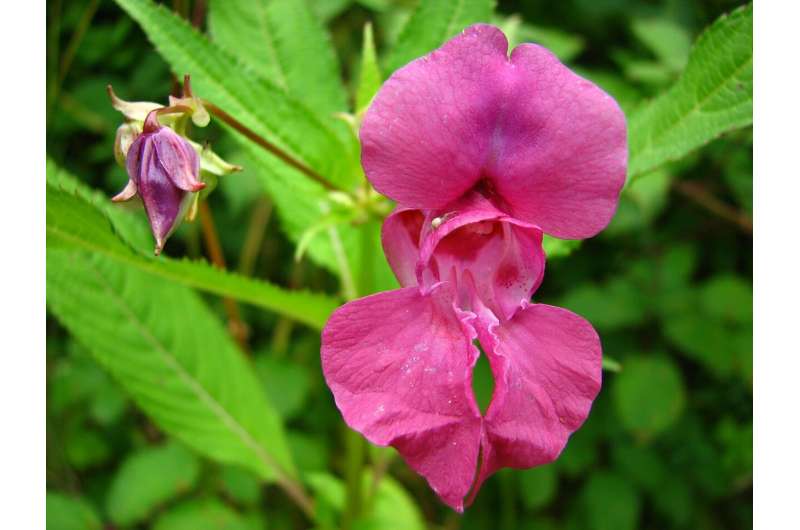Research advancing biological control of invasive plant species

Academics from Royal Holloway, University of London in collaboration with The Centre for Agriculture and Bioscience (CABI) and the University of Reading are the first in Europe to study the ecological effects of a rust fungus on the invasive plant species, Himalayan Balsam, in the field.
Professor Alan Gange, from the School of Biological Sciences at Royal Holloway, presented findings from the three year Natural Environment Research Council (NERC) funded project on Himalayan Balsam, its ecology, invasion and management in the UK.
Thorough testing has established that Himalayan Balsam rust Puccinia komarovii var. glandulifera is a true specialist on its host Himalayan Balsam. The rust was released in the UK following ministerial approval in 2014, to be used as a safe way to control this invasive plant, without any non-target effects. Professor Gange's research examines the ecology of this rust fungus and what happens to community components following its release into the natural environment.
The study has supported field evidence that multiple genotypes of Himalayan Balsam are present in the UK, and that these genotypes differ in their susceptibility to the two rust strains that have been released. Evidence suggests that there is a genetic component to the susceptibility but also that environmental and microbiological factors also influence the proneness of the different genotypes.
The research explains that this is caused in part by endophytes – fungi that live within the roots and shoots of the plant. The project has found that the ability of the rust to infect plants is determined by the identity of the endophytes within the plant. The next stage of the work is to find out how to manipulate the endophytes, to enable the rust to have maximum effect.
Speaking of his research, Professor Gange, said: "It is clear that rust fungus is a suitable means of managing Himalayan Balsam in the UK.
"However, our results show that ecology isn't always black and white, as different species of endophytes that live within the leaves of the plant affect the efficiency of the rust."
Himalayan Balsam is an invasive plant that grows alongside riverbanks. Favouring damp conditions, the intrusive species can choke waterways leading to flooding, as well as secreting chemicals into the soil that aid with its development, whilst preventing other plant species from growing.
Himalayan Balsam is not native to Britain and it is thought to pose a threat to our ecosystem by competing with native plant species for water, light and nutrients.
First brought to the U.K. by the Victorians, the plant was originally introduced as a garden ornamental, much like the Japanese Knotweed, and has attractive flowers and novelty explosive seed pods.
However, it is now extremely common and has spread throughout most of Britain and is the largest annual plant in the British flora, reaching up to three metres in height within a matter of months.
Provided by Royal Holloway, University of London




















